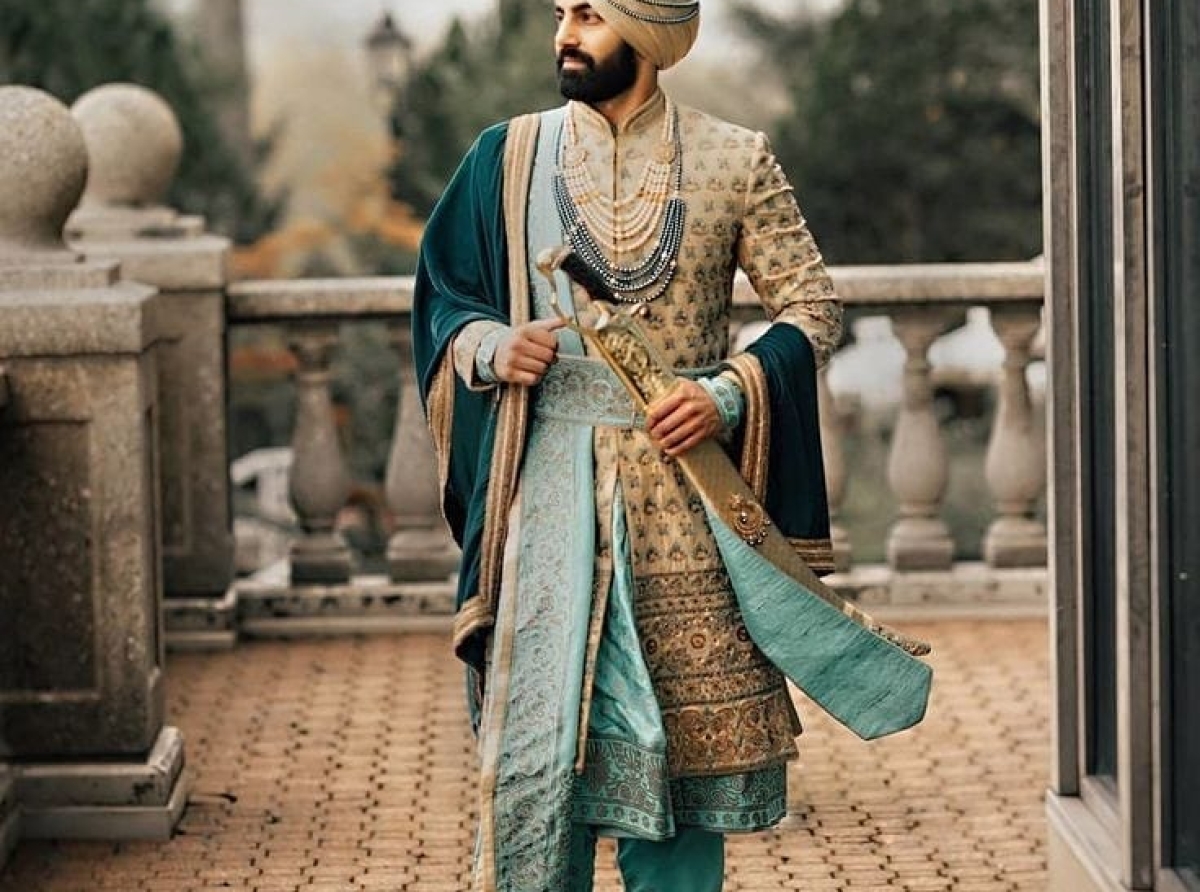Sherwanis Steal the Show: Traditional wear takes over men's apparel in India

Western wear dominating Indian men's wardrobes is passé as a revolution is underway, with traditional wear rising as the undisputed leader. Sales in this segment have skyrocketed by almost 25 per cent in just three years, as per a recent Times of India report. This can be attributed to a potent combination of factors: a booming retail presence, innovative designs, and the enduring cultural significance of traditional attire.
Sherwanis, the star of the show
Leading the charge is the sherwani. "Sherwanis have emerged as a standout category, constituting more than a quarter of all sales," says Ashish Mukul, Brand Head at Tasva. This isn't surprising. Sherwanis, with their rich embroidery and regal air, are the epitome of Indian elegance, perfect for weddings and festive occasions.
And this isn't just a fad. Major players like Aditya Birla Fashion and Vedant Fashions (Manyavar) are recognizing the goldmine and aggressively expanding their retail footprint. In the last two years alone, nearly 183 new stores have been launched, with plans for another 300 in the pipeline. This intense competition underscores the growing importance of the wedding wear segment, a market pushed up by the ever-growing desire for a grand Indian wedding.
Retail boom and design revolution
But the sherwani's rise is just one piece of the puzzle. A massive retail expansion is fuelling the fire. Big ethnic brands are opening hundreds of new stores across India. This increased accessibility makes it easier than ever for men to embrace traditional wear. "The success of Vedant Fashions' listing has further intensified competition," says Vedant Modi, Chief Revenue Officer. He highlights the "aspirational nature of weddings" as a key driver. Weddings are a once-in-a-lifetime event, and Indian consumers are increasingly opting for premium, high-quality ethnic wear to make a statement on their special day.
It's not just about availability, though. Brands are also upping their design game. Gone are the days of stuffy, traditional styles. Today's ethnic wear is a fusion of heritage and modern flair. Collaborations like Aditya Birla Fashion's partnership with designer Tarun Tahiliani for Tasva are a prime example. This blend of tradition and contemporary sensibilities is attracting a whole new generation of fashion-conscious men.
Beyond weddings, a market on the rise
While weddings are a major sales driver, the market for traditional wear extends far beyond the big day. The aspirational nature of Indian weddings, as highlighted by Modi, translates into a demand for high-quality ethnic wear for all kinds of special occasions. Even everyday wear is getting a touch of tradition, with the continued popularity of kurtas and kurta sets.
The Indian men's apparel market, despite facing pandemic hurdles, has shown remarkable resilience. With a Compound Annual Growth Rate (CAGR) of nearly 10 per cent between 2015 and 2020, the market is poised for further expansion. Experts predict 18 per cent CAGR in the next four years, driven by a growing middle class with more disposable income and evolving consumer preferences.
Ethnic wear, currently has 6 per cent share of the total men's clothing market, is expected to be a major growth engine. This segment is expected to move ahead at a CAGR of almost 20 per cent in the coming years. Demand for premium items like sherwanis is particularly strong, as customers prioritize comfort, luxury, and thoughtfully designed pieces. Classic favorites like kurtas and kurta sets also continue to be popular, with brands introducing new designs and expanding their reach to cater to this enduring demand.
Growth is due to several factors: a booming middle class with more disposable income, a changing demographic with a younger, more fashion-forward population, and a growing demand for premium, well-designed ethnic wear.
While online shopping is on the rise, physical stores remain the dominant force, accounting for 90 per cent sales. This suggests that the experience of shopping for traditional wear, the ability to touch and feel the fabrics, and the personalized service offered by store staff, are still highly valued by Indian men.
Traditional wear thus has successfully dethroned western styles as the leader in Indian men's fashion. With its focus on innovation, quality, and a celebration of rich cultural heritage, traditional wear is poised to maintain its reign for years to come.

















